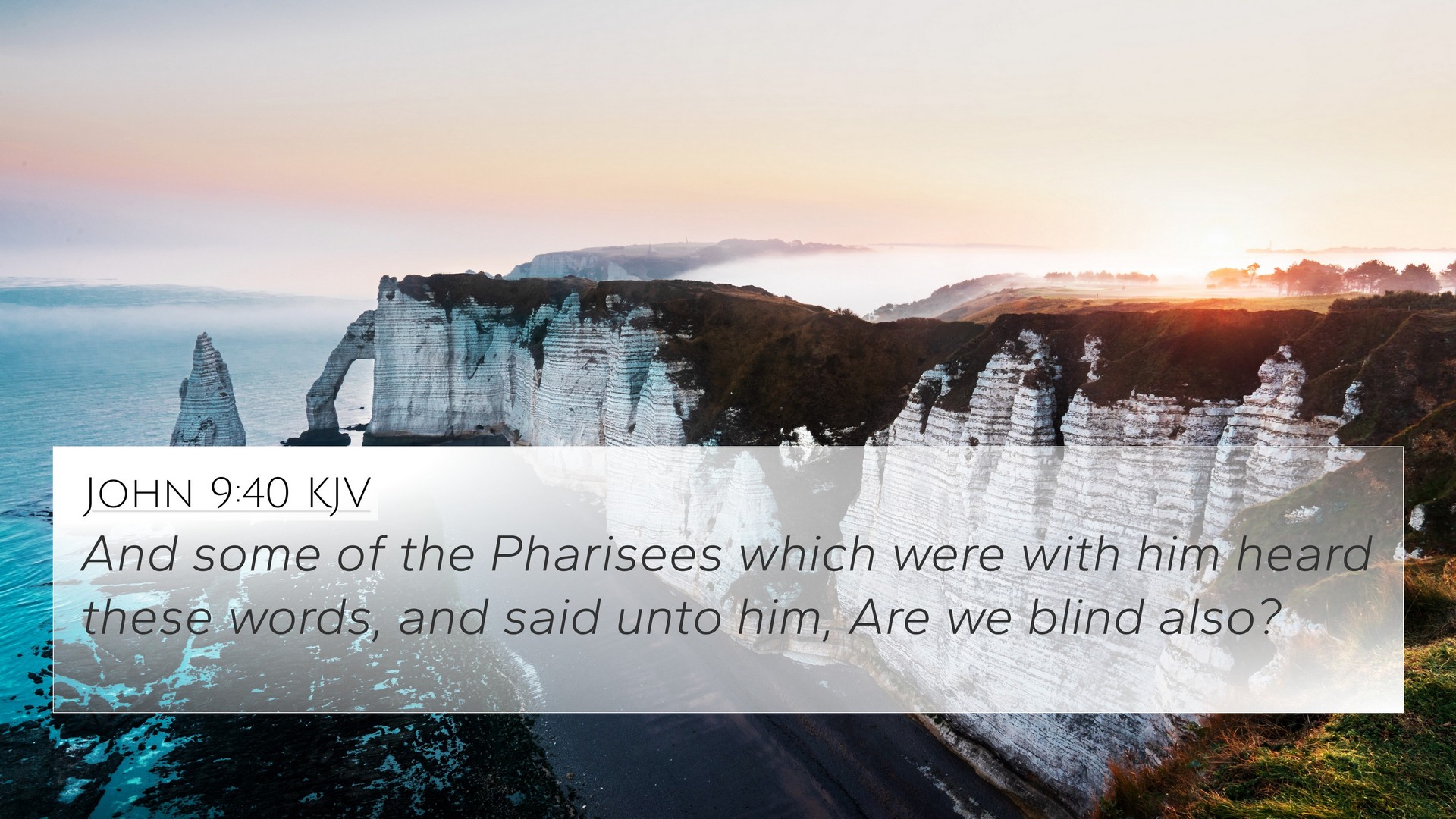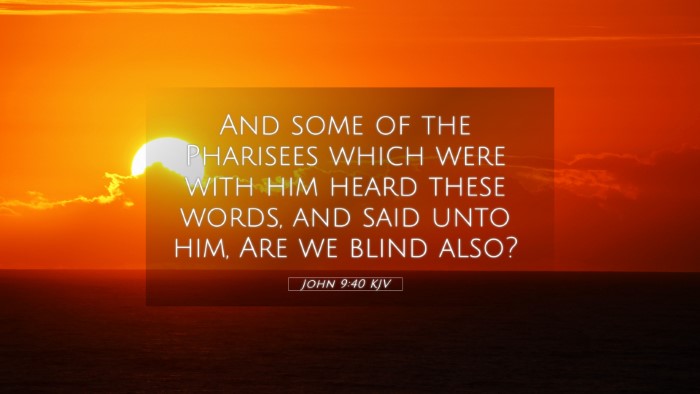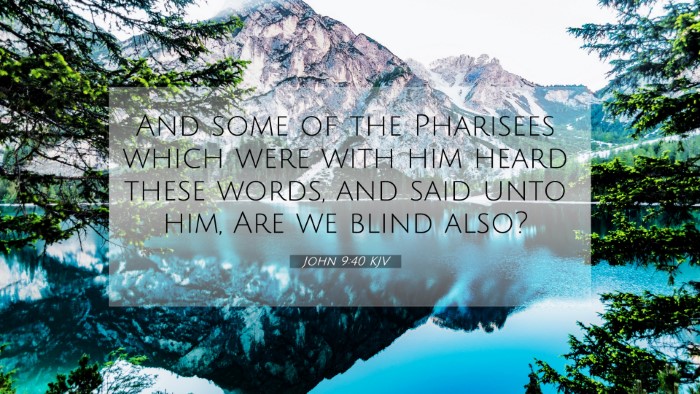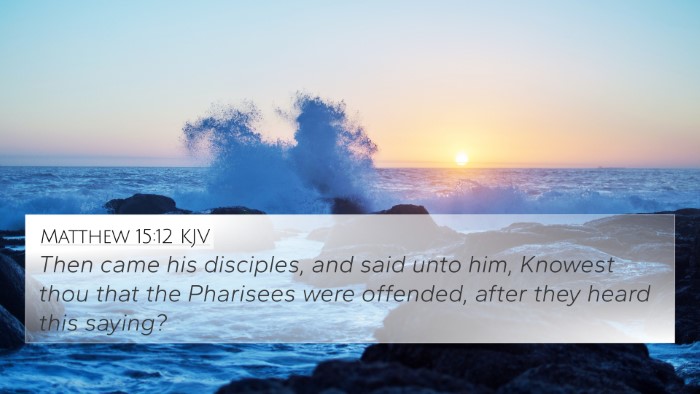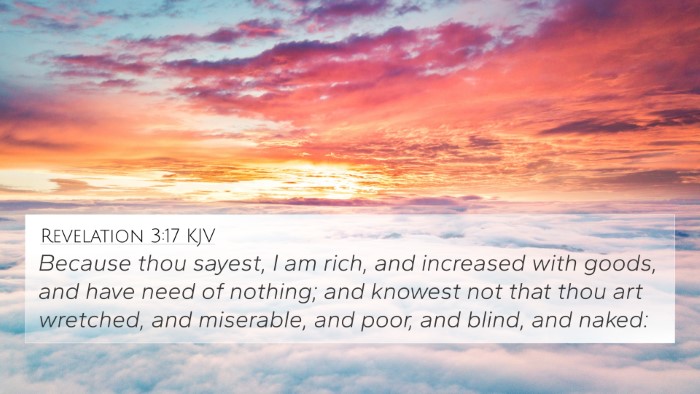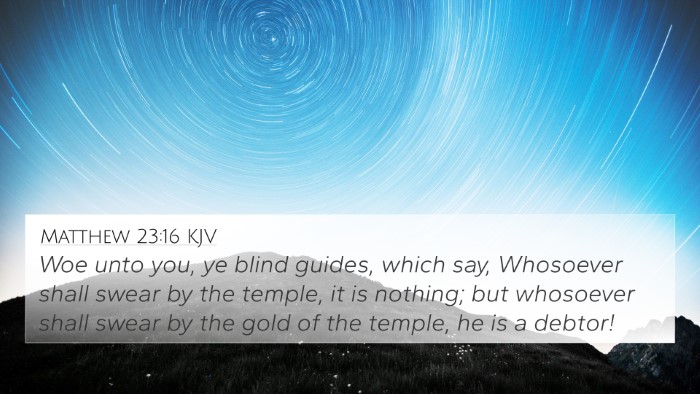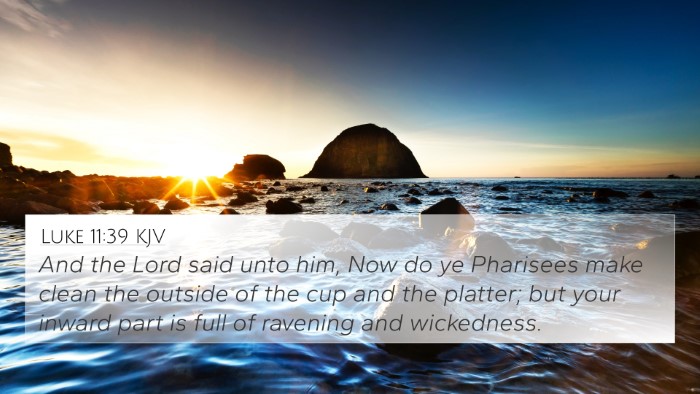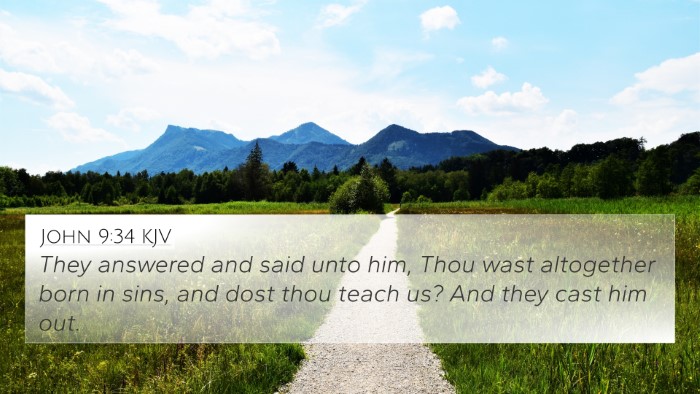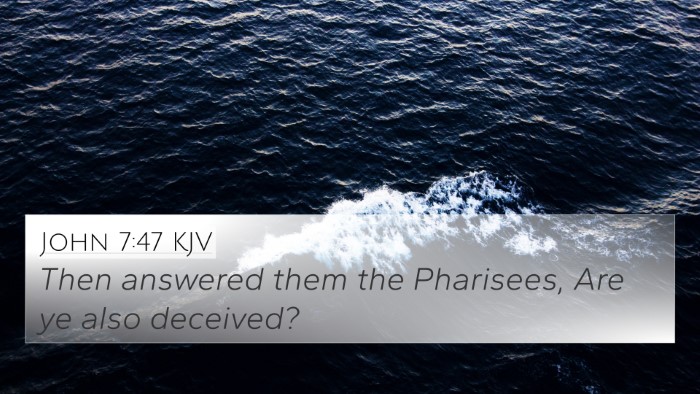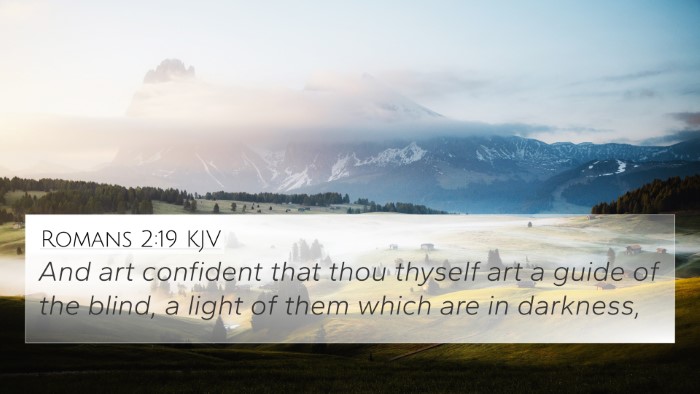Understanding John 9:40
In John 9:40, we find a significant moment where the Pharisees confronted Jesus regarding His teachings and miracles. This passage provides insight into the spiritual blindness of the Pharisees and the contrast between physical sight and spiritual understanding. To delve deeper into the meaning and implications of this verse, we can draw from the insights of public domain commentaries, bringing clarity and depth to its interpretation.
Context of John 9:40
Before analyzing the verse itself, it is important to place it in its broader context. In John 9, Jesus heals a man born blind, performing a miracle that leads to a confrontation with the religious leaders. They struggle to accept the truth of Jesus’ authority and His ability to perform such miraculous signs. John 9:40, where the Pharisees ask, “Are we blind also?”, serves as a pivotal moment in this story.
Commentary Insights
-
Matthew Henry:
Matthew Henry emphasizes the irony of the Pharisees' question. While they physically could see, their spiritual perception was clouded by pride and unbelief. This blindness was a metaphor for their inability to see the truth that Jesus represented. Henry highlights the importance of humility in understanding spiritual truths.
-
Albert Barnes:
Albert Barnes points out that the Pharisees considered themselves the guardians of spiritual truth and rejected the idea that they could be blind to God’s revelations. Barnes notes that their response reflects a deeper spiritual aversion to acknowledging Jesus as the Messiah, marking a crucial point in the Gospel narrative.
-
Adam Clarke:
Adam Clarke discusses the implications of the question posed by the Pharisees. He explains that their inability to recognize their own blindness signifies a refusal to heed the evidence presented by Jesus. Clarke asserts that true insight requires an openness of heart and a willingness to accept the truth, a theme resonating through scripture.
Bible Cross-References for John 9:40
For a more comprehensive understanding of John 9:40, we can explore related scriptures that illuminate its themes of spiritual blindness and the recognition of truth:
- Isaiah 42:19 – This Old Testament prophecy refers to the blind that would not recognize the truth, echoing the spiritual condition of the Pharisees.
- Matthew 15:14 – Jesus refers to the Pharisees as blind guides, leading others into blindness partaking in false teachings.
- Luke 6:39 – This verse presents a parable about blind leaders guiding blind followers, underscoring the dangers of spiritual blindness.
- John 8:12 – Here, Jesus proclaims Himself as the light of the world, indicating that true sight comes from following Him.
- Romans 11:7-8 – Paul discusses the hardening of Israel’s hearts, relating this to the Pharisees' inability to recognize Jesus.
- 2 Corinthians 4:4 – Paul writes about the god of this world blinding the minds of the unbelievers, highlighting spiritual blindness in a broader context.
- 1 John 2:11 – John states that whoever hates his brother is in darkness and does not know where he is going, indicating moral and spiritual blindness.
- Revelation 3:17 – This verse speaks of a church that believes it is rich and in need of nothing while being blind to its true condition.
Thematic Connections
This verse and its surrounding passages create thematic links within the Bible regarding the concepts of light, darkness, and spiritual insight versus blindness. By examining these connections, readers can better understand the overarching messages of Scripture concerning faith and recognition of divine truth.
Practical Applications for Bible Study
Studying John 9:40 alongside connected scriptures provides a powerful tool for individual and group Bible studies. Cross-referencing these passages can yield insights into the nature of belief and unbelief, guiding us toward a deeper appreciation of Jesus’ role as the light that dispels darkness.
Using Tools for Bible Cross-Referencing
- Bible Concordance: Useful for finding words and their occurrences in scripture.
- Bible Cross-Reference Guide: Helps in identifying related verses easily.
- Bible Chain References: Allows readers to follow themes and ideas across different books of the Bible.
Conclusion
John 9:40 serves not just as a question of the Pharisees but as a profound illustration of spiritual awareness and blindness. By examining the verse in light of related scriptures and insights from esteemed commentaries, one gains a richer understanding of the text and its implications for faith. Engaging in comparative Bible verse analysis enhances our comprehension and encourages deeper reflection on our own spiritual sight and understanding.
